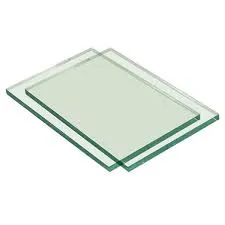Zář . 10, 2024 04:22
Understanding Tempered Glass Insights from Product Data Sheets
Tempered glass, also known as toughened glass, is a type of safety glass processed by controlled thermal treatment to increase its strength compared to normal glass. The product data sheets of tempered glass provide essential details about its properties, manufacturing process, applications, and safety features.
Manufacturing Process
The production of tempered glass involves heating the glass to temperatures exceeding 600 degrees Celsius and then rapidly cooling it. This process, known as tempering, alters the internal structure of the glass, creating a state of pre-stress. As a result, tempered glass is significantly stronger than standard glass and can withstand higher impact forces and temperature fluctuations. This crucial information is typically outlined in the product data sheet, detailing the thermal tempering parameters and the standards adhered to during production.
Physical Properties
A typical data sheet for tempered glass includes various physical properties such as thickness, tensile strength, and thermal resistance. The strength of tempered glass is often several times greater than that of standard float glass, allowing it to withstand impact and pressure without breaking. The sheets frequently specify the maximum and minimum sizes available, as well as tolerances, which are critical for architects and builders when designing glass installations.
Safety Features

One of the standout features of tempered glass is its safety. In the event of breakage, it shatters into small, blunt pieces that are less likely to cause injury, as opposed to sharp shards from standard glass. This property is vital for applications in places where human safety is a concern, such as in buildings, cars, and shower doors. The data sheet often emphasizes this point, making it clear that tempered glass complies with safety standards, such as those established by the American National Standards Institute (ANSI) and the International Organization for Standardization (ISO).
Applications
Tempered glass is used in a wide range of applications, from architectural structures to appliances. The product data sheet typically outlines common uses, such as in glass facades, doors, and partitions, as well as for automotive windows and kitchen and bathroom uses. This information helps clients understand where tempered glass can be effectively utilized, allowing for better decision-making in design and construction.
Energy Efficiency
Additionally, tempered glass can also contribute to energy efficiency. Many product data sheets include details about the glass's performance in terms of thermal insulation and solar control, which are becoming increasingly important in sustainable building practices. The ability to minimize heat transfer while maximizing natural light makes tempered glass an attractive option for modern architecture.
Conclusion
In conclusion, the product data sheets for tempered glass serve as an invaluable resource for anyone involved in the design and construction industries. By detailing its manufacturing process, physical properties, safety features, applications, and energy efficiency, these sheets provide a comprehensive understanding of why tempered glass is an essential material in contemporary architecture and design. Whether for residential, commercial, or industrial use, the benefits of tempered glass are clear, making it a preferred choice for various applications.
The Role of Mirror Glass in Luxury Interior Design
NewsJun.23,2025
The Best Textured Glass for Bathroom Windows
NewsJun.23,2025
Residential Glazing Energy Efficiency Requirements
NewsJun.23,2025
Float Glass Uses
NewsJun.23,2025
Clear Float Glass For Solar Panel Covers
NewsJun.23,2025
Benefits Of Using A Glass Mouse Pad Over Traditional Ones
NewsJun.23,2025